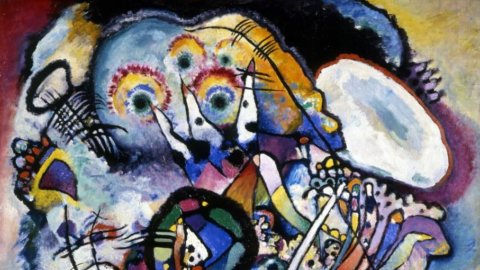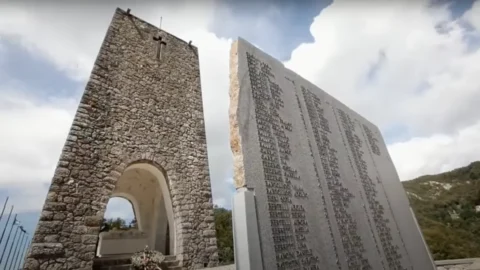After the cycle, which lasted five years and was created in collaboration with the Guggenheim Foundation, which saw the masters of the European and American avant-gardes collected by Peggy Guggenheim arrive in Vercelli, Arca opens its doors to the other part of the artistic history of the twentieth century, in collaboration with the National Museum of St. Petersburg, the world's largest collection dedicated to Russian art.
The first exhibition, curated by Eugenia Petrova, assistant director of the State Russian Museum in St. Petersburg, on a project conceived in collaboration with Francesco Paolo Campione (Director of the Museum of Cultures in Lugano) and Claudia Beltramo Ceppi Zevi, is dedicated to Wassily Kandinsky , the artist who more than any other was the hinge between West and East.
The exhibition, entitled The artist as shaman, develops around twenty-two masterpieces by the father of abstractionism, from eight Russian museums, accompanied by carefully selected paintings by masters of the Russian avant-garde and by an extraordinary group of ritual objects from polar traditions and shamanic practices – belonging to the Sergio Poggianella Foundation, which holds one of the richest collections on the subject – practiced in the distant and endless Siberian regions, from which Kandinsky drew profound inspiration during his youthful years of ethno-anthropological studies, and which contributed, together with Russian peasant traditions to the development of his intellectual path towards abstraction as a form of spirituality.
The works presented in Vercelli mainly belong to the years that Kandinsky spent between Munich and Russia, between 1901 and 1922, the year in which he was forced to abandon Soviet Russia forever, which he had also supported in the early years of the revolution, to accept the assignment offered to him by Walter Gropius to share teaching at the Bauhaus with Paul Klee.
It is the moment in which the artist came to the conviction that to transpose feelings and thoughts onto the canvas it was not necessary to depict objects, landscapes, the faces of everyday life but that, through colour, shape, their combination and the rhythm of the composition it was possible to express the moods and emotions provoked both by the external world and by the profound movements of the human spirit.
The long and deep journey he led Kandinsky abstraction, had begun in the years of his university education, when his law studies had led him to analyze the foundations of law in the traditions of the endless countryside of Russia, among the distant populations of Vologda, in Siberia, where as an ethnologist he the life, customs and economy of the Syrians, a small ethnic group to whom he dedicated some scientific articles, also encountering the popular practices deriving from the ancient shamanic rituals, whose profound spirituality strongly affected him.
Many elements found in his work recall that experience, from the figure of the horse and rider, to the ritual drum, to the symbolic figures of animals.
The education of the young Kandinsky grew within an impetuous cultural current that developed in Russia throughout the 800th century, following the Napoleonic invasion and the consequent destruction of Moscow, aimed at seeking the roots of an original and intact Russian civilization. Part of this fabulous and esoteric universe, opposed to Western European rationalism, were fairy tales and popular songs transmitted orally since the Middle Ages and then taken up again in literature by Pushkin and Dostoevskji and in music by Rimsky Korsakov, first, and then by the others Russian composers of the early 900s, from Mussorsgky to Skriabin to Stravinsky.
In the fusion of his study experiences and the Russian cultural climate, the Spiritual in art and the thought that will make him the greatest art theorist of the 900th century, the inventor of abstraction, and one of the greatest masters of all the art of the 900s.
The exhibition itinerary at the Ark of Vercelli leads along this path with many of his supreme masterpieces, accompanied by rare objects belonging to the tradition of shamanism, from his first paintings born in a symbolist atmosphere, to the works of the Murnau period, up to the large canvases of the few years in which Kandinsky became the meeting point between the Western avant-gardes, gathered around Der Blaue Reiter, and the major protagonists of the Russian avant-garde to arrive at the works of the final period of his stay in Russia, which saw him engaged, as commissioner for the arts of post-revolutionary government before disagreement with the forms of Soviet power led him to accept a definitive exile.
The exhibition is curated by Eugenia Petrova and promoted by the City of Vercelli, organized by Giunti Arte exhibitions museums with the patronage of the Piedmont Region, the contribution of various institutions and companies, including the Province of Vercelli, Biverbanca and with the support of the Cassa Foundation Savings Bank of Vercelli.





